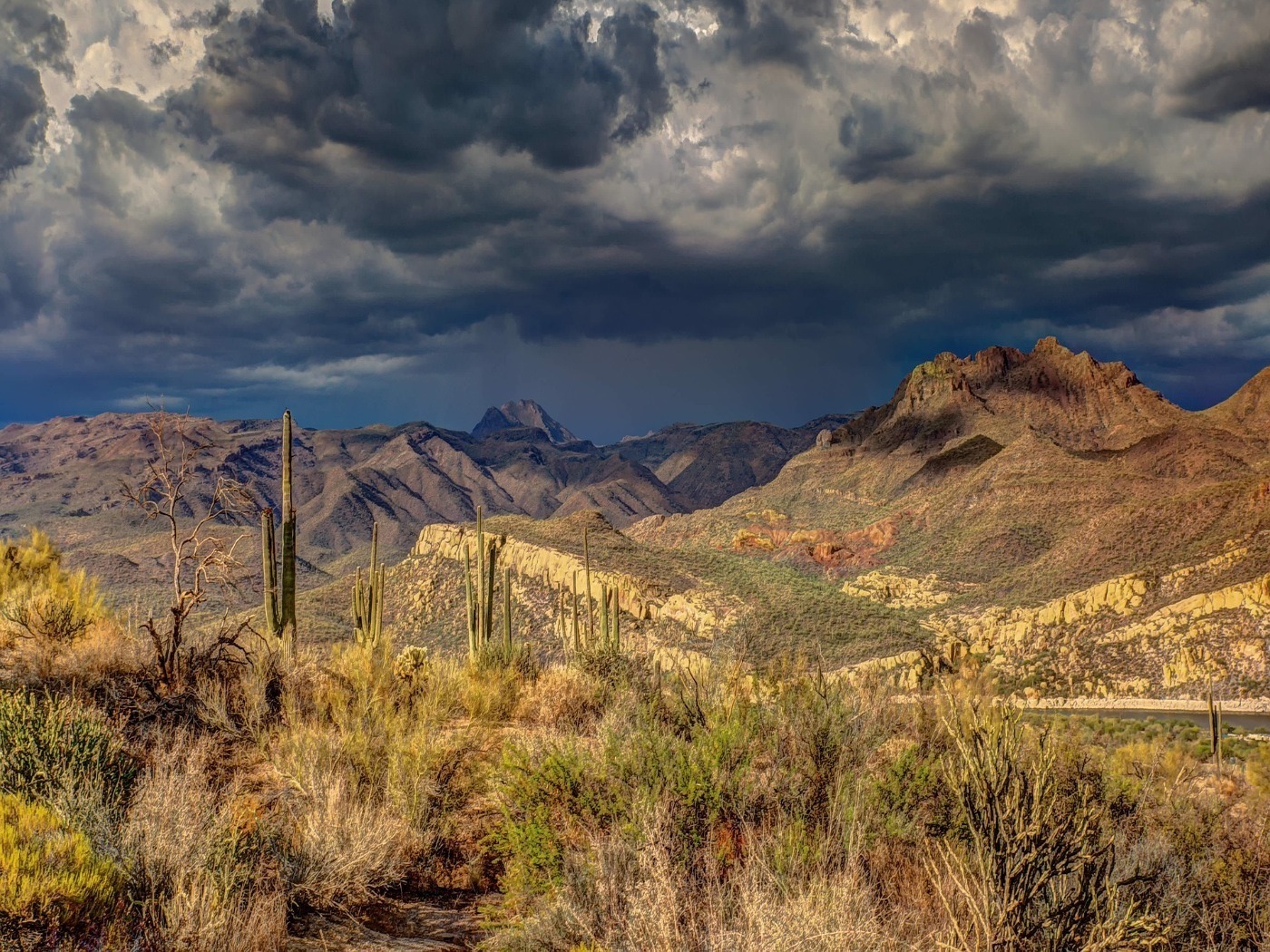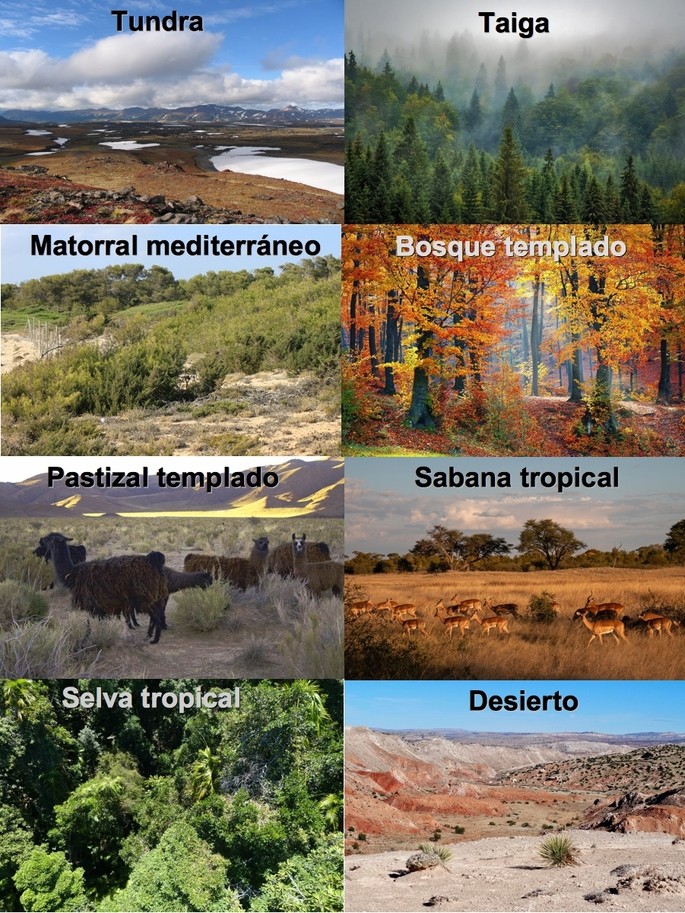The world’s biomes are communities of plants and animals characteristic of a climate. The key ingredient in recognizing a particular biome is vegetation.
Biome is an extended expression of ecosystems, i.e., a biome can cover several ecosystems.
The 8 main terrestrial biomes of the world are: tundra, taiga, temperate forest, Mediterranean scrub, grassland, savanna, jungle and desert. Here are their characteristics.
Tundra

It is the terrestrial biome with the simplest vegetation and lowest animal diversity. It is found only in the northern hemisphere, in the Arctic polar region.
The tundra is treeless and the ground is covered with mosses and lichens. The dominant plants are creeping vascular plants, dwarf shrubs and sedges.
Mammals include caribou and musk ox, and predators include brown bear, wolf and arctic fox. The herbivorous mammals are the arctic hare and the lemmings.
The climate of the tundra biome corresponds to polar climates; temperatures above 0 °C last 6 to 10 weeks a year, while the ground remains under permafrost much of the year.
Examples of tundra are found in Norway and Finland.
Boreal forest or taiga
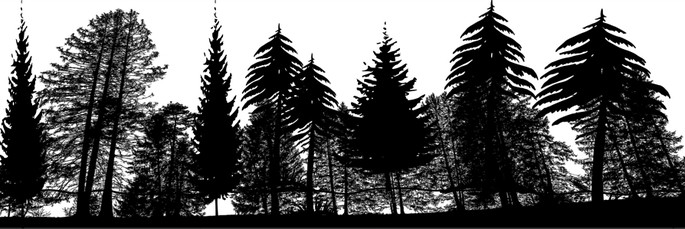
An evergreen forest in the northern hemisphere of needle-leaved trees dominated by conifers. It covers regions of cold continental and subarctic climates of the Eurasian and North American continents.
The boreal forest consists mainly of spruce, pine and larch, which are characterized by pointed leaves. The little sunlight reaching the forest floor allows hardly any grasses and shrubs, except at the edges of the forest.
The characteristic mammals of the boreal forest belong to the weasel family such as stoat, mink and marten. Lynx and beaver are also found.
The elk is the largest herbivore associated with taiga. Other mammals living in the boreal forest of western North America include bighorn sheep, mountain goats, and deer.
Examples of the boreal forest can be found in Alaska (USA), Quebec (Canada), and Moscow (Russia).
Temperate deciduous broadleaf forest

It is the terrestrial biome of continental temperate climates, dominated by trees with thin, broad leaves that fall in winter. At this time, the trees enter a period of dormancy that protects them from wind and low temperatures.
Early spring finds bare trees, allowing solar radiation to reach the ground, favoring the growth of a layer of grasses and shrubs. Characteristic trees of the temperate forest are oak and maple. Plants that bear fruit are common.
The fauna is quite rich, characterized by squirrels, deer, raccoons and black bears. Some animals hibernate during the winter, such as bears, while others awaken occasionally to eat, such as squirrels.
Birds may be omnivorous or feed only on seeds. They are present throughout the year, such as woodpeckers, which may feed on insects present under the bark of trees during the winter.
Examples of temperate forests are found in Puerto Montt (Chile), Iowa (USA) and Luxembourg.
Mediterranean forests and shrublands.

The Mediterranean forest and shrubland biome occurs in areas with hot dry climate in summer and wet and cold in winter, as is the case in the Mediterranean region. This biome is limited between 30 and 40 degrees latitude in both hemispheres. They are also called chaparral.
It is characterized by a vegetation rich in shrubs, with reduced leaves and a waxy cover, such as rosemary, laurel, sage and thyme.
Animals associated with this biome are few, such as birds and reptiles.
Examples of the Mediterranean biome are found in Greece and San Diego California.
Temperate grasslands

This biome is associated with semi-arid continental climates at mid-latitudes. Perennial grasses and herbs are the predominant vegetation, as they are adapted to seasonal temperatures and the amount of annual rainfall.
The fauna of grasslands is of low diversity. In North America, bison, antelope, prairie dogs and woodchucks are common. Carnivores include coyote, badger and ferret.
Grasslands are known as steppes in Russia and Ukraine, prairies in North America, and pampas in South America.
Tropical savanna

The tropical savanna develops in tropical climates with distinguishable dry and wet seasons. The total annual precipitation is between 760 and 1270 mm of rainfall, with five months per year receiving less than 125 liters per square meter.
The vegetation is characterized by a layer of grass, on top of which are scattered trees and shrubs leaving open spaces.
The African savanna has the greatest variety of hoofed animals, such as antelopes, gazelles, buffaloes, zebras, rhinoceroses, wild boars and elephants. In general, these animals live in collective groups, in order to protect themselves from predators such as hyenas, jackals and felines.
Examples of tropical savanna are found in Nigeria, Kenya and Brazil.
Rainforest

It is the most complex and diverse terrestrial biome on the planet. It is located in the equatorial zone between 10 degrees north and 10 degrees south, where there are ideal climatic conditions for the growth of vegetation. Throughout the year temperatures are warm and humidity is constant.
Vegetation occurs in three layers: the emergent tree canopy, the canopy canopy layer, and the canopy layer below the canopy. Broad-leaved evergreen trees are typical of this biome. Below the tree canopy, shrubs and small trees are stunted by the low light reaching the forest floor.
Some plants grow above the trees, from where they can capture light and water, such as ferns, orchids and bromeliads. There are also lianas and climbing plants, as well as parasitic plants that feed on the roots of the trees.
Animal life is very diverse and rich, adapted to living in trees. As the vegetation persists throughout the year, the availability of food is secure. Characteristic animals are brightly colored, such as butterflies, birds and frogs; they can also be very noisy, such as monkeys and gorillas.
Examples of tropical rainforests are found in Brazil, Colombia and Papua New Guinea.
Desert

The desert biome is characterized by flora and fauna adapted to living in arid conditions. Rainfall totals less than 250 liters per square meter throughout the year. There are cold deserts and hot deserts, depending on geographic location and temperatures.
Shrubs and bushes are the predominant vegetation, with small leaves, often with thorns or spikes. The root system is superficial and extended, to ensure that the little rain that falls can be absorbed quickly. This type of vegetation is known as xerophytic. Other plants, known as succulents, store water inside, such as cacti.
The most common desert animals are reptiles, such as lizards and snakes, and birds that can fly to obtain water.
Examples of cold desert can be found in Turkestan (Kazahstan) and warm desert in Arizona and Namibia.
You may also be interested to see:
Rivers
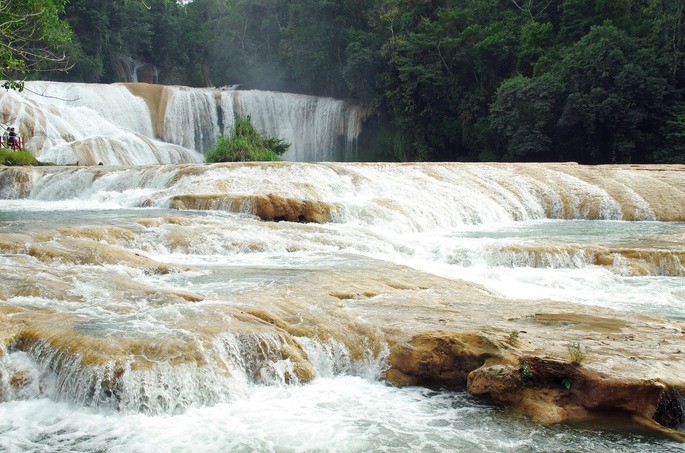
Rivers are aquatic biomes closely linked to the soil, where living beings are adapted to the constant movement of water. Rivers are found in all regions of the planet and are characterized by constant remodeling.
Trees such as willows and poplars thrive on the banks. Organisms such as algae and cyanobacteria live in the streams. Bacteria are food for protozoa and small invertebrates, and these in turn are food for fish and larger invertebrates.
Examples of rivers are found in the Amazon River, the Orinoco and the Usumacinta.
Wetlands
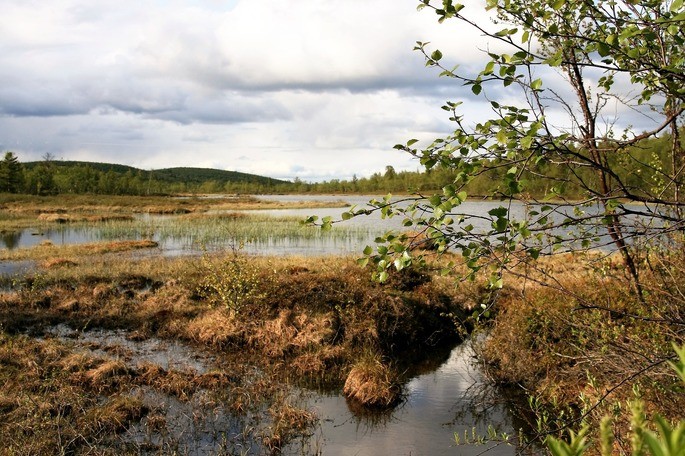
Wetlands are freshwater biomes characterized by soils that are saturated or inundated by water much of the year. They can be formed by rainfall or high groundwater table.
Depending on the type of vegetation prevalent, three types of wetlands can be distinguished: marshes, swamps and marshes.
In wetlands, living things have to adapt to low oxygen levels. For example, some plants have structures, such as pneumatophores, that direct oxygen to the roots.
Insects, such as mosquitoes and dragonflies, commonly live in wetlands. Amphibians are also characteristic of this biome, such as toads, frogs and salamanders, as well as some reptiles, such as crocodiles and turtles.
Examples of wetlands are the Centla swamps in Mexico and the Ciénaga Grande in Colombia.
Continental shelf
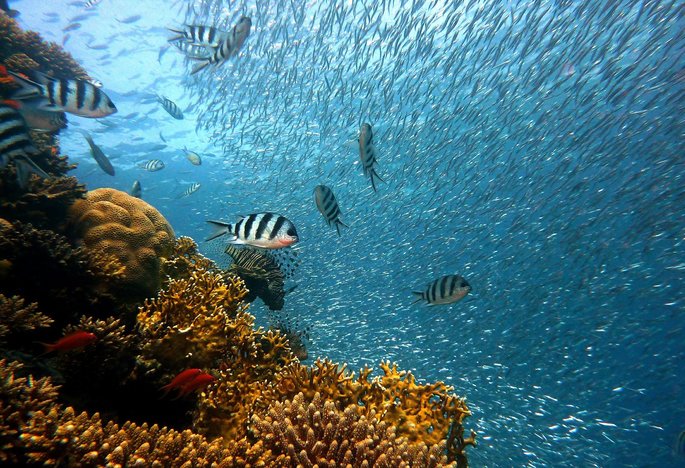
This is the saltwater biome composed of the expanse of continental land that is permanently submerged. It is comprised from the lowest part of the tide up to when the depth in the sea reaches 200 meters. This area is very rich and productive, so it has a very important economic interest.
Mollusks, sea cucumbers, sea urchins, crabs, manta rays and flatfish abound.
Coral reefs, forests and seagrass meadows are found in this biome.
Deep ocean
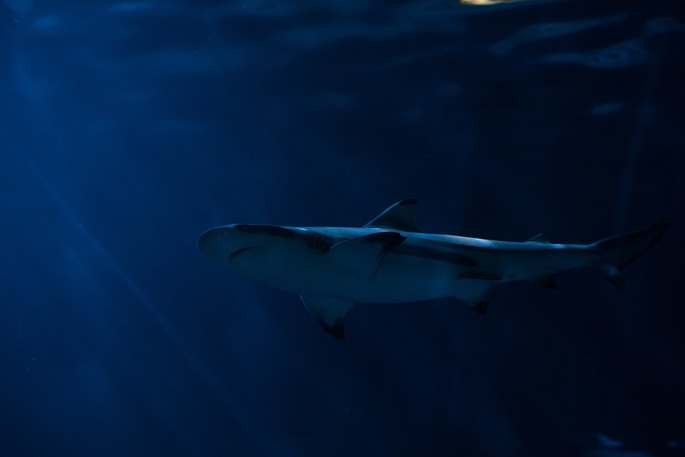
It is the saltwater biome that occupies 65% of the earth’s surface and is the least explored. It covers marine areas deeper than 200 meters, and can reach more than 11,000 meters at the bottom of the Mariana Strait in the Pacific Ocean.
The ocean floor is cold, dark and high pressure, extreme conditions that few organisms can withstand.
The best known predators of the open ocean are sharks, manta rays, tuna and swordfish, which feed on small invertebrates and fish.
You may also be interested in:
References
Begon, M., Townsend, C.R., Harper, J.L. (2006) Ecology: from individuals to ecosystems. 4th edition. Blackwell Publishing. United Kingdom.
Goldstein, M.I., DellaSala, D.A. (2020) Encyclopedia of the World’s Biomes. Elsevier
Valderrama D., K., Carrillo R., M.G. (2019) Naturaleza y Sociedad Ciencias 1 Biologia Secundaria. Rios de Tinta S.A. Mexico.

